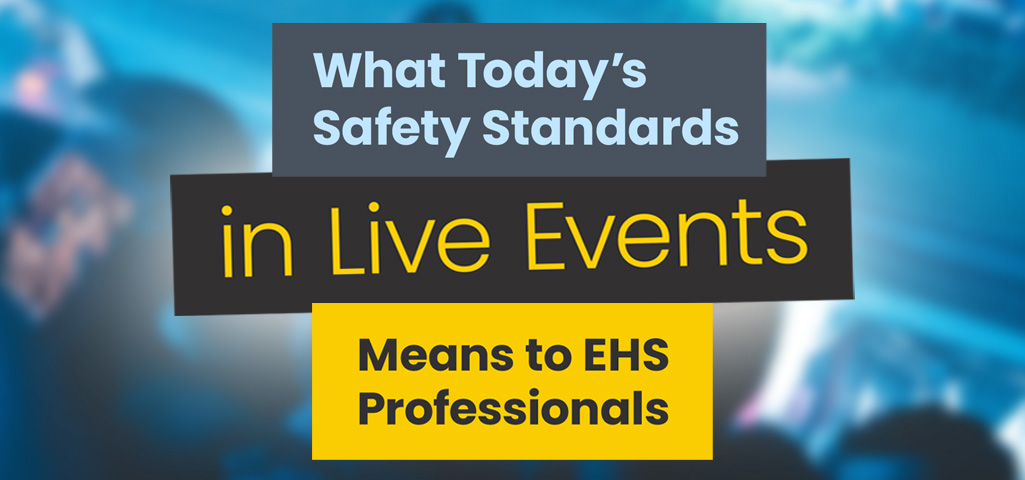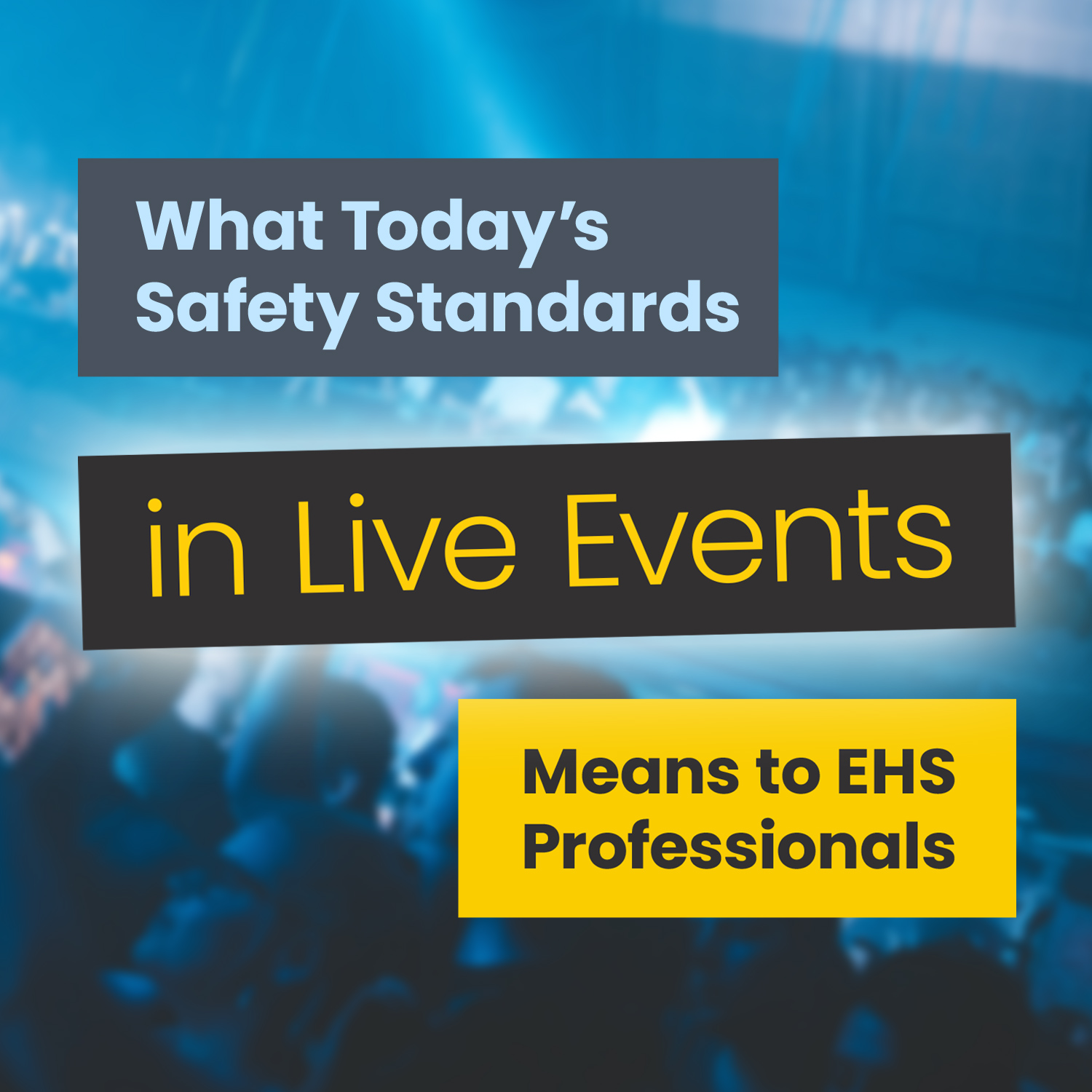
What Today’s Safety Standards in Live Events Means to EHS Professionals
Safety for live events is a complicated topic. With an infinite number of challenges faced, it’s one of the most fascinating sectors as a safety professional.
The complication begins with the term “live event.” There is no single definition that works for every live event. Is it entertainment, public assembly, a religious event, or something else entirely?
With every live event there are segments or phases of the experience from set up, the event itself, to the removal or breakdown of the event, and so many external factors. Everything from weather to security to crowd management must be considered. There are endless external factors.
The challenge to the safety professional when considering training or risk assessment activities is always the scope and nature of the live event activity. All the standard practices of the safety professional apply, but in different versions of risk and safety activities.
If that isn’t complicated enough, there is still the major challenge in executing the live event’s safety due to the nature of the organizers, the staff and volunteers and the labor providers.
In just the last few months, we have seen event attendees killed in crowd crushes; employees killed while removing structures after a national sporting event, and attacks on religious or social gatherings.
While many involved businesses have a vested interest in the safety of live events, ultimately the responsibility lies with the direct event organizers to ensure the safety of everyone associated. While many of those organizers would like to speak to the overall safety of the event, they often lack the insights of a safety professional in the planning, executing and response of safety in the live event world.
Current gaps within this sector? There are no certificate programs in live event safety. There is currently no definition of an Event Safety Professional. There are next to no effective guidelines or statutes requiring the use of safety professionals in the live event world.
The future evolution of the safety profession may eventually provide us all with a blueprint for the education, development, and professional criteria of a live event safety professional. Until such a time, safety professionals must develop their skill sets based on their occupational setting, the types of jobs they wish to get, and the scope of the live event world they wish to occupy. The field is evolving quickly. Often the evolution is predicated by tragedy and reaction to those tragedies.
For those who wish to be involved in live event safety, my advice is to define your role in the live event world, develop the skills necessary to operate in that role, and continue your training and education as the industry and practices continue to change.
About Kenneth Keberle, CSP, CIT, CHST, YellowBirdPro
Ken Keberle, a YellowBird Pro, has had many roles in the live event world; from structure design and manufacturing to project management, training and as a technical resources director. He entered live event safety role full time in 2010 and has worked for some of the largest companies in that industry. He currently is focused on the education and development of people in that industry. He currently is serving as the Education Director for the Event Safety Alliance, and as an Instructor for the University of California San Diego Department of Extension Services Occupational Health and Safety courses.





